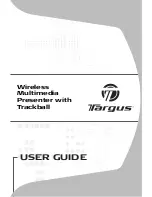
70
Appendix B: Trouble Shooting Guide
Any transport motion that is not correctly reflected in the EXSYNC pulses will cause image
distortion in the scan direction. For standard line scan cameras, this type of image distortion may
not greatly affect edge sharpness and small defect contrast; thereby having minimal impact on
defect detection. However, TDI image quality is more sensitive to object motion synchronization
errors.
The following subsections discuss causes of poor image quality resulting from the EXSYNC signal
not accurately reflecting the object motion.
Continuously Smeared, Compressed or Stretched Images
When accurate synchronization is not achieved, the image appears smeared in the scan direction.
If the EXSYNC pulses are coming too fast, then the image will appear smeared and stretched in the
machine direction. If the pulses are too slow, then the image will appear smeared and compressed.
Check the resolution of the encoder used to generate the EXSYNC pulses, along with the size of the
rollers, pulleys, gearing, etc. to ensure that one pulse is generated for one pixel size of travel of
the object.
It is also important that the direction of image travel across the sensor is matched to the camera’s
scan direction, as set by the user. See ‘Scan Direction’ in the user manual for more information.
If the scan direction is incorrect, then the image will have a significant smear and color artifacts in
the scan direction. Changing the scan direction to the opposite direction should resolve this
problem.
Refer to ‘Camera Orientation’ in the user manual to determine the correct direction orientation for
the camera.
Note that the lens has a reversing effect on motion. That is, if an object passes the lens-outfitted
camera from left to right, the image on the sensor will pass from right to left. The diagrams in the
user manual take the lens effect into account.
It is not always possible to establish the exact EXSYNC resolution or lens magnification to ensure
accurate synchronization. To alleviate this problem, the camera has a spatial correction feature
that can make fine adjustment to restore the alignment. (See section ‘Compensating for Encoder
Errors’ for details.)
Randomly Compressed Images
It is possible that when the scan speed nears the maximum allowed, based on the exposure time
used, the image will be randomly compressed and possibly smeared for short periods in the scan
direction.
This is indicative of the inspection systems transport mechanism dynamics causing momentary
over-speed conditions. The camera can tolerate very short durations of over-speed, but if it lasts
too long, then the camera can only maintain its maximum line rate, and some EXSYNC pulses will
be ignored, resulting in the occasional compressed image.
The loss EXSYNC due to over-speed may also cause horizontal color artifacts.
Over-speeding may be due to inertia and / or backlash in the mechanical drive mechanism, causing
variations around the target speed.
Содержание Linea HS Series
Страница 5: ...The Linea HS Monochrome Cameras 5 DECLARATION OF CONFORMITY 73 DOCUMENT REVISION HISTORY 74...
Страница 13: ...The Linea HS Monochrome Cameras 13 Responsivity QE Plots Note values measured using 8 bit 1x gain main array...
Страница 14: ...14 The Linea HS Monochrome Cameras Mechanical Drawings Figure 3 HL FM 08K30H 00 R Mechanical Drawing...
Страница 15: ...The Linea HS Monochrome Cameras 15 Figure 4 HL HM 16K30H 00 R Mechanical Drawing...
Страница 26: ...26 Camera Performance and Features Figure 7 Image with incorrect scan direction...
Страница 73: ...Declaration of Conformity 73 Declaration of Conformity...




































